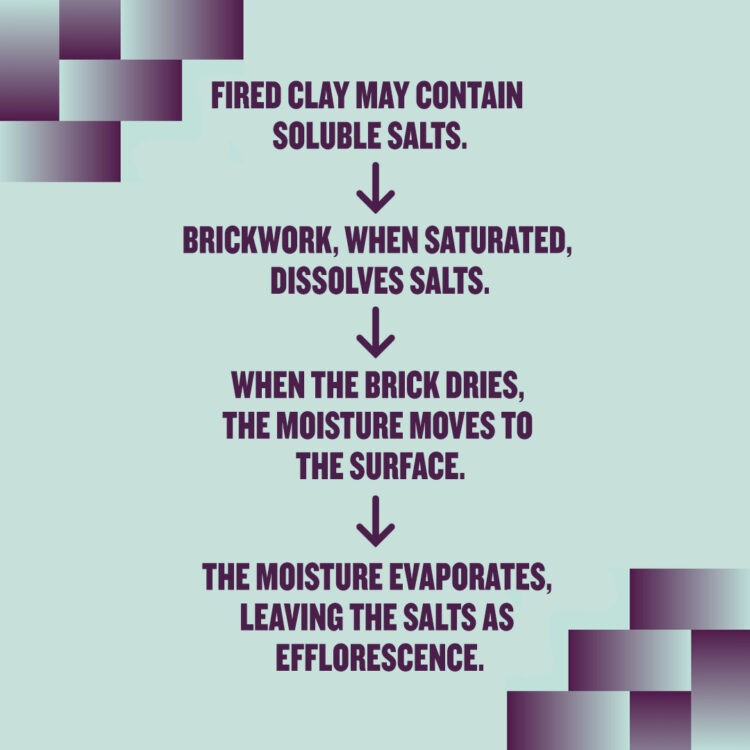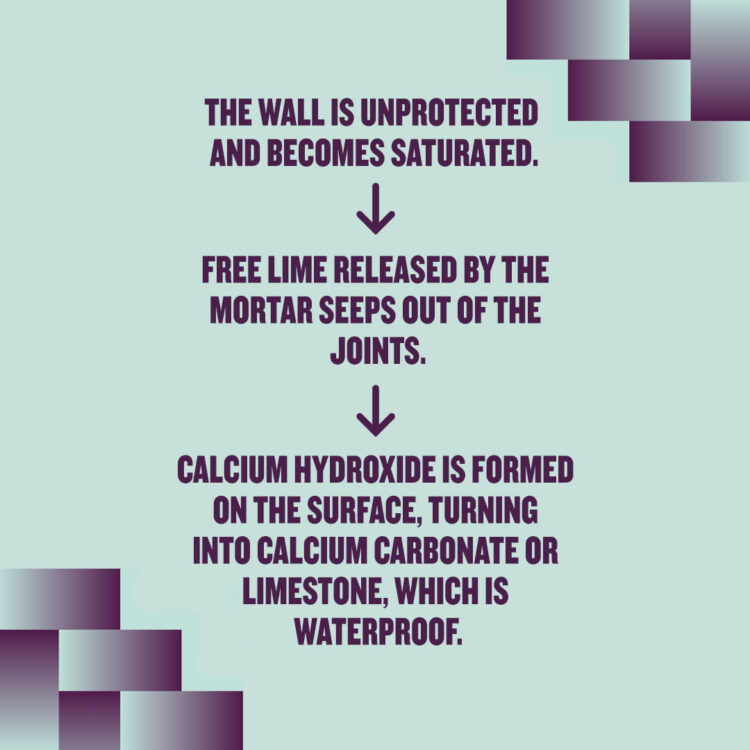Latest
News, Opinions and What we’re up to.

Efflorescence & Lime Staining
Any build or project comes with its own challenges. Some of these may be Efflorescence or Lime Staining, which are different forms of white deposit left on the surface of the brick. But not to worry, each can be minimised and should rarely occur, providing good site practice adhered to. Today's blog will give you an insight into both and what to do if or when they appear.
What is Efflorescence?
First up, let's talk about efflorescence. The word finds its origins in French, meaning 'to flower', which describes the 'bloom' of salt at the surface. Though the translation might sound beautiful, efflorescence on your brick or stone can be anything but. Efflorescence occurs when the water that has passed through the surface of the brick evaporates. Soluble salts are then left on the brickwork surface as the salts carried in solution by water do not themselves evaporate. The most common salts are sulphates of sodium, magnesium and calcium. These salts can be found in various types of clay, some more than others. Although they are not harmful, the appearance of efflorescence is not attractive.
Good site practice should eliminate the effects of efflorescence, but weather and climate also contribute to the problem. Efflorescence should be allowed to weather away naturally, and no spraying is advised. The salts may be brushed away with a bristle brush and removed from the wall. High-pressure washing will worsen the issue as more salts are drawn out and redeposited when the bricks dry.
What is Lime Staining?
Lime staining is entirely different but is often confused with efflorescence. Both can coincide. Lime staining is free lime, generally from mortar, which has been washed from the mortar joints onto the face of the brick. Lime Staining occurs in a process similar to efflorescence when excess water flows through cementitious material. This water can dissolve calcium hydroxide (free lime), which is then deposited on the brick face. Calcium hydroxide is a soluble form of lime which is created as cement hydrates.
Lime staining can be distinguished by the flat top to the staining stemming from the bed joint, or alternatively fanning out from the cross joint, clearly associated with the horizontal or vertical joints.
Lime is typically removed by a proprietary acid brick cleaner. Unlike efflorescence, speed is vital, and if the calcium carbonate is allowed to solidify back into limestone, only specialists will be able to remove it.
Both occurrences result in unsightly white deposits, which must be dealt with differently. However, symptoms can be prevented by protective details in the design, such as overhangs, drips, copings and sills that stop copious amounts of water from reaching the face of the brickwork.
Lime staining can occur with any brick as it generally comes from the mortar. Brick efflorescence comes from salts within the clay, which have a higher concentration in some clay types.
Prevention
When it comes to preventing both of these, there are a couple of steps that Contractors and Contract Administrators should take to minimise the rain penetrating the brickwork.
Bricks should not be placed directly on the ground but should be kept clear using pallets or similar. This avoids contamination and saturation. Protection should extend to bricks stacked out on scaffolding or mast climbers.
Mortar should also be kept protected from dampness and contamination. On larger sites in the UK, this is in silos which provide more certainty and protection.
Newly built brickwork is vulnerable while the mortar cures; it should be protected by boards and hessian for at least the first seven days. The brickwork must not only be kept dry and free from rain but allowed to breathe with the protective shielding applied so that air can circulate and condensation does not occur.
The scaffolding boards adjoining the wall must be turned back when work ceases so rain does not saturate the brickwork by splashing on the boards.
Mortar must be kept clear from the inside cavity, which could otherwise deflect water into the brickwork. Internal snots and mortar which has not been cleaned are unacceptable and may lead to efflorescence. Mortar droppings on wall ties can also cause water to run on the rear of the brick skin.
Weep holes must be clear of debris collected during and after completion. Cavity trays need to be clear of droppings. If droppings have accumulated, bricks may have to be removed locally to gain access to the cavity.
To find out more or speak to a member of our specialist sales team, email us at contact@brickandstone.eu or call us at 028 9083 0038.


